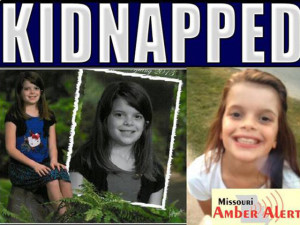Hailey Owens is the victim of a broken Amber Alert system. Hailey was kidnapped in front of witnesses in the 3200 block of West Lombard St., in Springfield, MO at 4:48 p.m. on February 18, 2014. By 5:00 p.m. the witnesses had provided local law enforcement with the suspect’s description, vehicle make, color & license plate. Based on eyewitness accounts and the information provided to law enforcement, the Amber Alert should have been issued in minutes. Unfortunately, Springfield PD is not authorized to issue Amber Alerts. That is the responsibility of the Missouri State Highway Patrol.
At 6:00 p.m. the Springfield PD issued a news release and posted information about the abduction to their social media sites. Unfortunately, a news release carries neither weight no the sense of urgency of an Amber Alert. A statewide Amber Alert was issued at 7:07 p.m., two-hours and nineteen-minutes after Hailey was kidnapped. Information was distributed to all area law enforcement agencies and media outlets. The suspect’s description, vehicle make, color & license plate were finally released to the public.
The National Amber Alert program was broken upon conception. Like all state Amber Alert systems, the Missouri plan was conceived and created by the National Center for Missing and Exploited Children (NCMEC). I know because I attended one of their steering committee concept meetings and argued against their old technology and their bureaucratic approach. My ideas were rejected by the architects of the plan at NCMEC.
Amber Alert should be a local, not statewide system because kidnapping is a local crime. When children are murdered the distance between where the child was last seen and their body was recovered was less than 1.5 mile in 46% of cases and less than 12 miles in 76.5% of cases. The same study clearly demonstrates that missing children are killed within a very short time after they are abducted. 46.8% are dead within an hour, and 76.2% are dead within three hours. Had the Amber Alert been issued within minutes, not hours of Hailey’s abduction, she might very well be alive today. Clearly, in the most desperate cases like Hailey Owens, time is of the essence. We need action, not red tape.
The rationale for this cumbersome approach to the Amber Alert is to guard against ‘cry wolf’ scenarios. I have never seen evidence of ‘cry wolf’, but I have seen plenty of kids die because it took too long to issue an Amber Alert. I believe that ‘cry wolf’ is nothing more than a fiction created to justify a broken system. We trust cops with guns, why not trust them to issue Amber Alerts?
NCMEC there is blood on your hands. That the Amber Alert failed to save Hailey Owens is not the fault of Springfield PD or the Missouri State Highway Patrol. They were simply following a protocol created by the National Center for Missing and Exploited Children.















